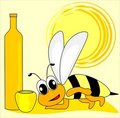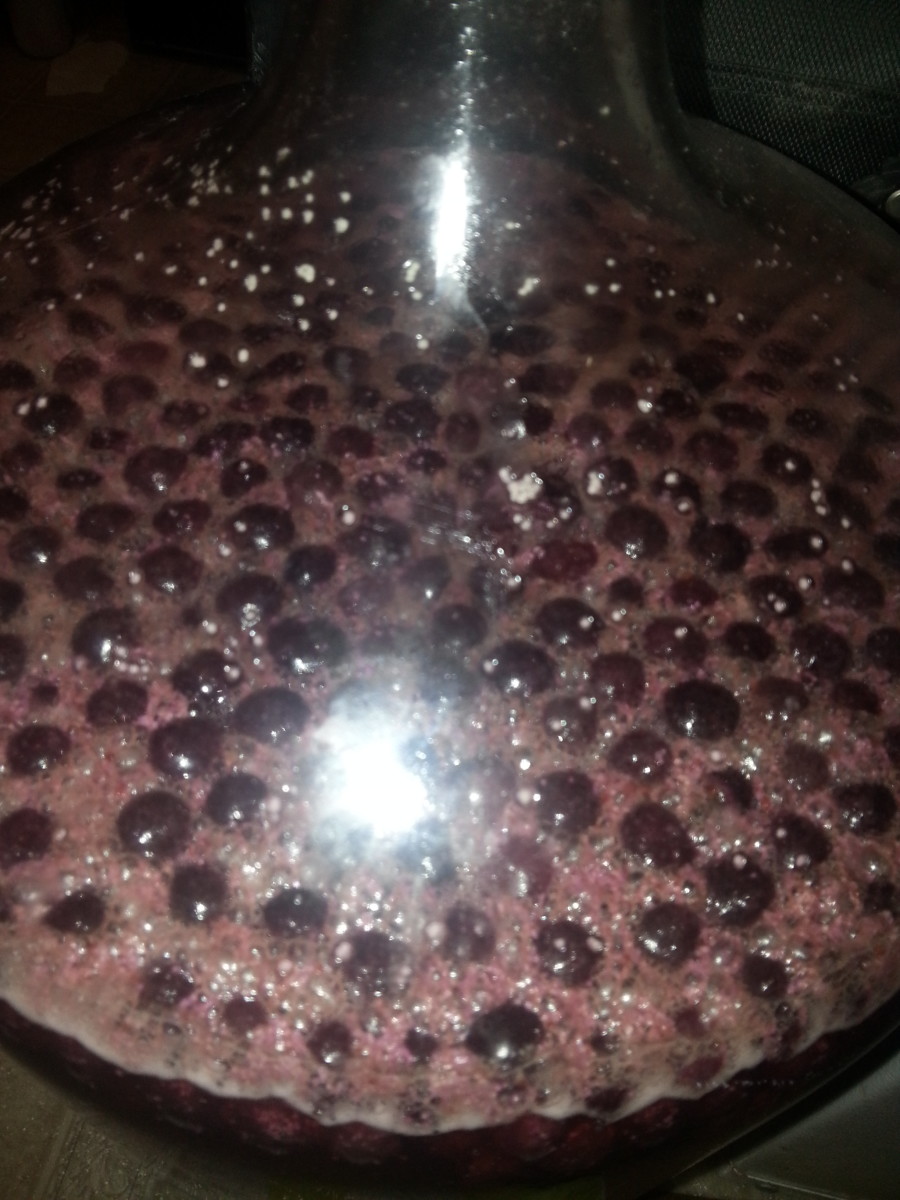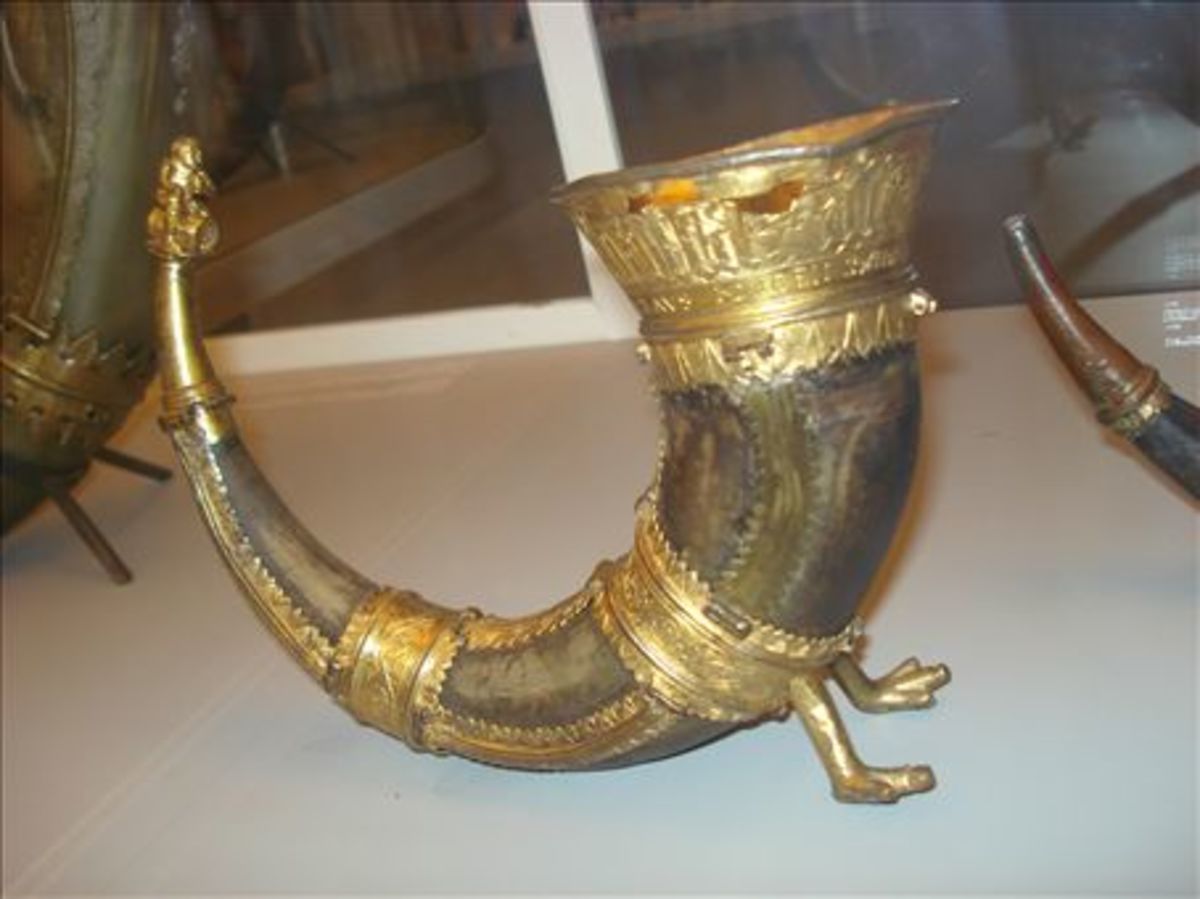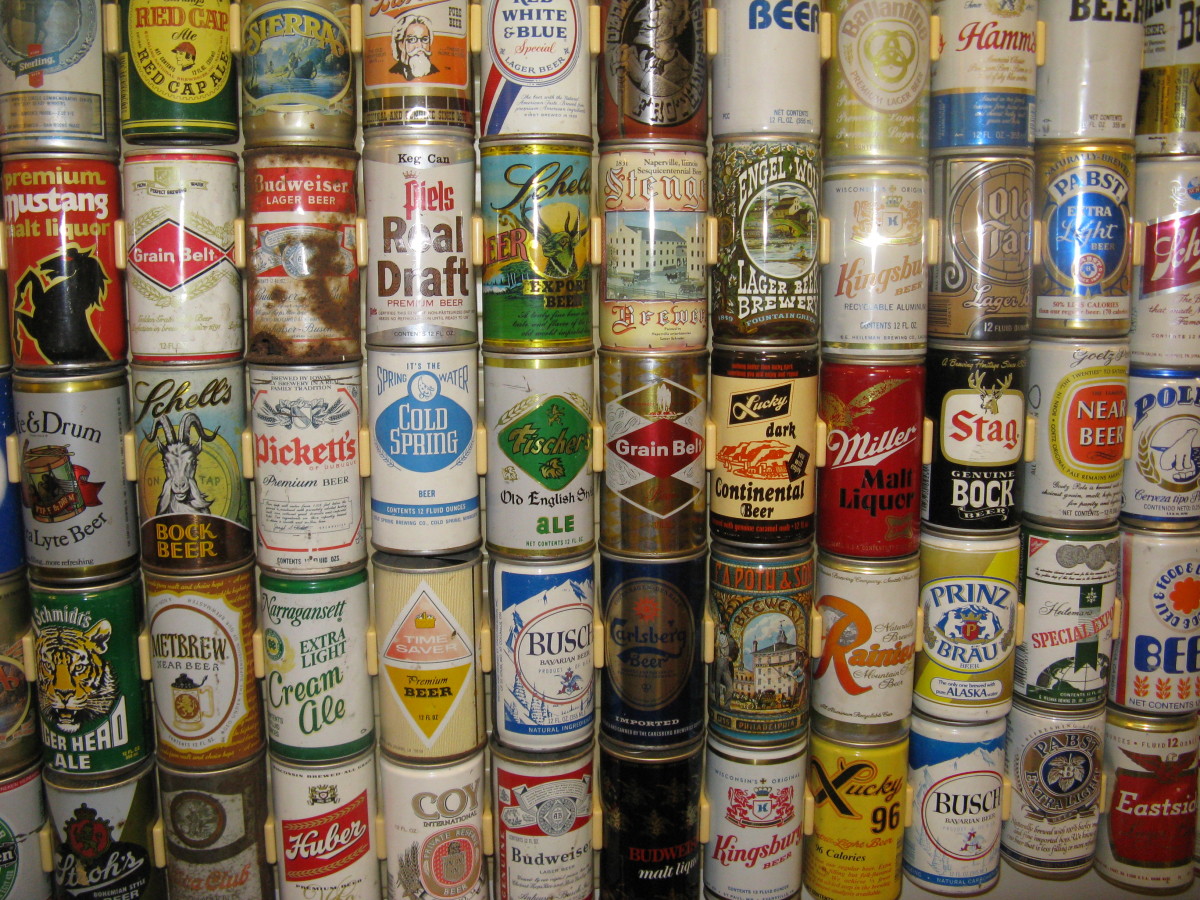Mead: Wine from Honey

Mead is an alcoholic drink made by mixing honey in water and fermenting the mix.
Humans began stealing honey from bees at least as early as 8000BC [1]. The earliest archaeological evidence for Mead is about a thousand years later. This, on the basis of archaeological evidence makes it older than Wine and older than the earliest confirmed beers, though some think beer may have first been produced 1500 years earlier when cereal was first farmed [2],[3]. However some think it the ancestor of all fermented drinks, which is plausible bearing in mind that Mead requires only taking honey from bees, while beer and wine need hard work and a relatively settled lifestyle, Mead would likely have arisen first. The word comes from a Proto-Indo-European root, and proto European is most popularly supposed to have originated in the steppes of Eastern Europe and Western Asia around 3700BC.
Mead became popular then because it resists mechanisation and require manual labour became a craft rather than an industry once honey could be mechanically separated from the beeswax needed to make church candles. The advent of paraffin wax made the decline of mead almost terminal. Given mead is ecologically more responsible it should be revived.
Mythology and Magic
Scandinavian legend has Mead stolen by Odin in the shape of an Eagle [4], while in the Vedas Indra's eagle steals honey from Heaven and in Greek Legend it is stolen by Zeus's eagle though I have found this stated in only one place[4]. This may be related to the Trickster motif of the theft that benefits man: Prometheus stole Fire and Raven stole Water to give to mankind. There is an alternative legend [7| where Mead is referred to as water that overflowed from Mimir's well, the well from which Odin gained his wisdom at the cost of an eye. Parenthetically Honey dew is said to fall from the world ash tree Ygdrassil and feed bees.
Since Mead alters consciousness it is likely that Mead was at one time used in shamanic practices, as suggested by the fact that Odin stole the Mead of Inspiration, which made the drinker a wise man (wizard) or a poet, poetry being at one time related to shamanism and magic.
History
Honey Bees are appear to have originated in South East Asia [9] though the earliest fossils known were found in Europe and date some 23 to 56 million years ago. mitochondrial DNA sequence analysis indicates that the modern honey bee split off from its ancestral line about a million years ago[8]. The yeasts in the pollen ridden nectar bees collected were a problem since they could cause the nectar to ferment. Bees evolved to handle this by converting the sucrose in the nectar to fructose and glucose. Behaviourally they evolved to dry honey thus increasing osmotic pressure which prevented fermentation. This may explain why water must be added to honey to make mead: the water reduces osmotic pressure. Some yeasts however evolved to handle this and became perfect yeasts for making wine and beer.
There is a pleasant but undocumented theory [8] that Mead originated in Africa between 20,000 and 40,000 years ago when bees nested in hollowed out tree trunks which became filled with water resulting in the natural production of Mead. When humans left Africa the knowledge of how to make Mead went with them.
Pottery vessels with the remains of Mead, Rice Wine and compounds produced by fermentation have been found in Northern China and dated around 7000BC and in Europe it is known to be associated with the Beaker Culture, 2800-1800BC, though the earliest description of Mead is in the Rigveda (1700-1100BC) and in Ancient Greece it was said to be the preferred drink and was known to be different from wine sweetened with honey.
In the late dark ages Mead was drunk by warriors in their lord's hall, and the bard Taliesin apparently mentions the spectacular drinking in the mead hall in what is now Edinburgh. Various later government regulations meant of course that Mead nearly vanished though some monasteries that kept bees also made Mead.
Mead became popular in Europe, India and China and mead drinking died out when sugar, which is much cheaper, became available. Mead was made in Monasteries: Beeswax was needed for candles and the combs were crushed to remove honey. The honey not removed by crushing was washed out with warm water, together with wild yeasts, and the result was Mead. Mechanical honey extraction by centrifuge made less honey available for Mead. Mead making survived largely as a non-commercial craft to the present day.
The Making of Mead
Mead is made very simply by mixing honey with water, leaving it in the sun for 40 days then leaving it near a fire. This makes use of wild yeasts in the honey and even if modern processing does not remove these yeasts it leads to unpredictable results (which is no always a bad thing for home production), so commercial manufacturers use standardised yeasts. In Finland it can be spiced by adding the pulp and rind of a lemon and raisins may be added during secondary fermentation: when they float to the top they are ready to eat. Note that Brown sugar may be used instead of honey. Ethiopian Mead includes a hop-like bittering agent and an unpronounceable variety of Mead is made by the Xhosa people of South Africa.
Sustainability [8]
Compare a medium sized grape vineyard to a medium sized apiary. The vineyard owner or operator must mechanize to survive. Tractors, irrigation systems, even turbines are sometimes used to produce microclimate controls. This must be purchased, which almost always means dollars leaving the local economy. Mechanization also replaces hand labor which means fewer ( and probably less fulfilling) "in the field" jobs. The apiary however does not lend itself to mechanization. Instead the work required in the apiary requires lots of hive manipulation that must be done by hand. Large-scale beekeeping requires lots of labor and that means jobs for the local economy. This tallies with Adam Smith's insistence [10] that maximisation of profit means maximisation of employment. Further, an apiary does not require fertilizer, machinery, or much water and as climatic changes put pressures on current global vineyard acreage, apiaries can thrive. Mead is therefore a sustainable alcoholic drink. Hopefully bees will survive the current epidemic of colony collapse disorder and provide mead for a long time yet
The Wrap
Mead is a venerable alcoholic beverage which seems under represented in mythology, though there is plenty of legend and lore about bees and honey. It is simple to make, and can be flavoured and spiced. Where grapes and grain are hard to grow mead is a popular drink but its resistance to mechanisation is one of the reasons it has not become a global industry like wine, beer or spirits.
It is time for a revival
Sources
[1] Honey Hunting Wkipiedia
[4] Mead Mythology
[6 ] How Odin stole the Mead of Inspiration
[7] An alternative tale of the origin of mead Dwarves Gods and more
[9] http://en.wikipedia.org/wiki/Honey_bee Wikipedia on the Honey Bee
[10] A brief note on Adam Smith
My hubs on related topics






